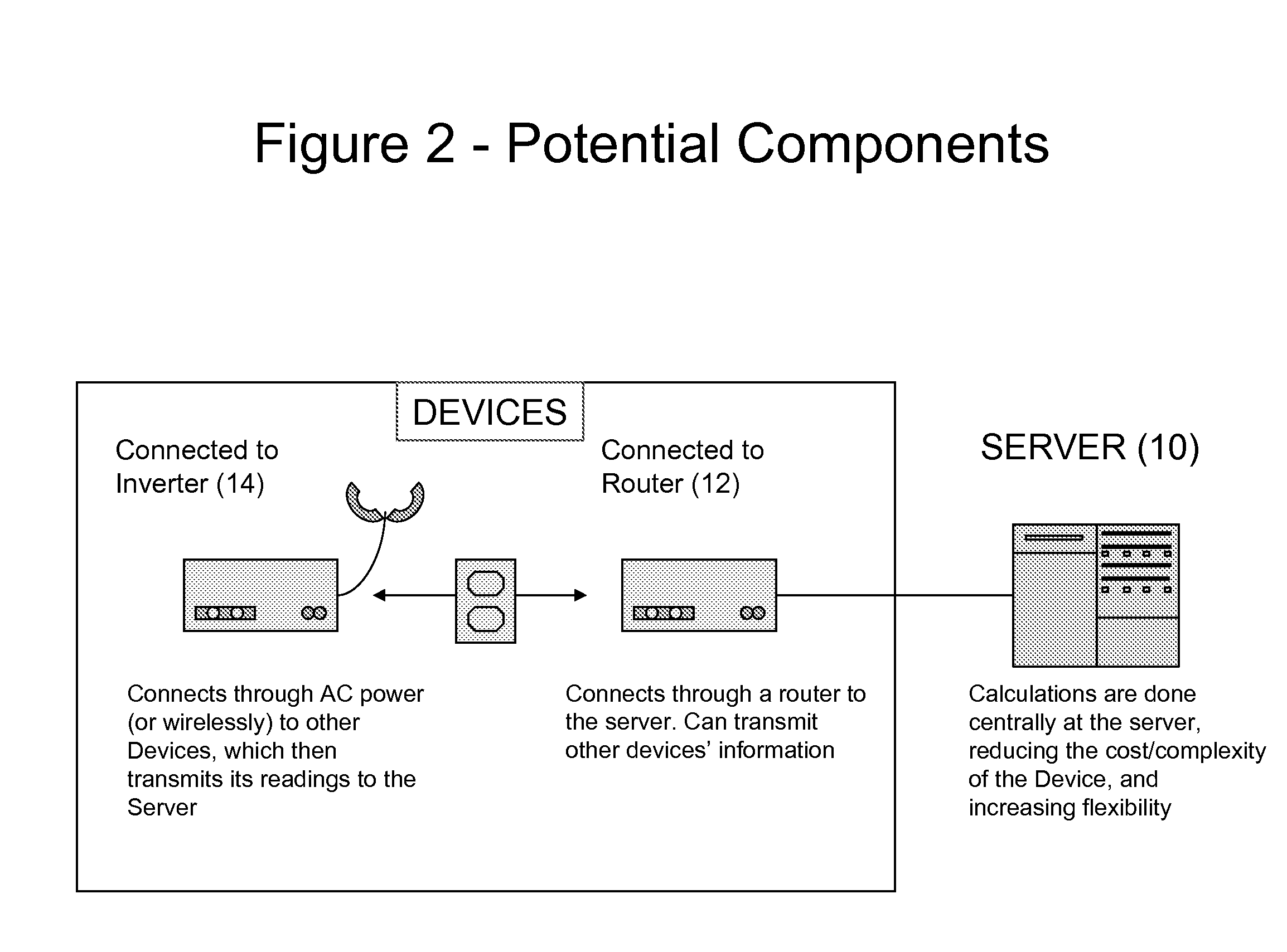Automatic system information determination of distributed renewable energy systems
a distributed renewable energy and information determination technology, applied in nuclear engineering, electric devices, nuclear elements, etc., can solve the problems of increasing difficulty in uniformly gathering data, increasing importance and difficulty in gathering data about the characteristics of all the systems, and less well known long-term efficiency and durability
- Summary
- Abstract
- Description
- Claims
- Application Information
AI Technical Summary
Benefits of technology
Problems solved by technology
Method used
Image
Examples
Embodiment Construction
[0031]The following detailed description is of the best currently contemplated modes of carrying out the invention. The description is not to be taken in a limiting sense, but is made merely for the purpose of illustrating the general principles of the invention, since the scope of the invention is best defined by the appended claims.
[0032]The present invention provides systems and methods that reduce and / or eliminate the need for user input about system configuration of monitored electrical systems (such as renewable power systems) by determining the input through comparative diagnostics. The quality of data is improved over direct input by users, or augments direct input by users, providing additional data about system configuration of monitored electrical systems based upon their consumption and / or output and known environmental conditions.
[0033]FIGS. 1-5 provide examples of a monitored electrical system (in this case a renewable power system and more specifically a photovoltaic ...
PUM
 Login to View More
Login to View More Abstract
Description
Claims
Application Information
 Login to View More
Login to View More - R&D
- Intellectual Property
- Life Sciences
- Materials
- Tech Scout
- Unparalleled Data Quality
- Higher Quality Content
- 60% Fewer Hallucinations
Browse by: Latest US Patents, China's latest patents, Technical Efficacy Thesaurus, Application Domain, Technology Topic, Popular Technical Reports.
© 2025 PatSnap. All rights reserved.Legal|Privacy policy|Modern Slavery Act Transparency Statement|Sitemap|About US| Contact US: help@patsnap.com



